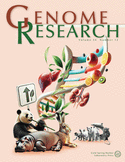DNA methylation profiles of diverse Brachypodium distachyon align with underlying genetic diversity
- 1ARC Centre of Excellence in Plant Energy Biology, The Australian National University, Canberra, Australia, 2601;
- 2ARC Centre of Excellence in Plant Energy Biology, University of Western Australia, Perth, Australia, 6009
- Corresponding author: justin.borevitz{at}anu.edu.au
Abstract
DNA methylation, a common modification of genomic DNA, is known to influence the expression of transposable elements as well as some genes. Although commonly viewed as an epigenetic mark, evidence has shown that underlying genetic variation, such as transposable element polymorphisms, often associate with differential DNA methylation states. To investigate the role of DNA methylation variation, transposable element polymorphism, and genomic diversity, whole-genome bisulfite sequencing was performed on genetically diverse lines of the model cereal Brachypodium distachyon. Although DNA methylation profiles are broadly similar, thousands of differentially methylated regions are observed between lines. An analysis of novel transposable element indel variation highlighted hundreds of new polymorphisms not seen in the reference sequence. DNA methylation and transposable element variation is correlated with the genome-wide amount of genetic variation present between samples. However, there was minimal evidence that novel transposon insertions or deletions are associated with nearby differential methylation. This study highlights unique relationships between genetic variation and DNA methylation variation within Brachypodium and provides a valuable map of DNA methylation across diverse resequenced accessions of this model cereal species.
Footnotes
-
[Supplemental material is available for this article.]
-
Article published online before print. Article, supplemental material, and publication date are at http://www.genome.org/cgi/doi/10.1101/gr.205468.116.
-
Freely available online through the Genome Research Open Access option.
- Received February 11, 2016.
- Accepted August 25, 2016.
This article, published in Genome Research, is available under a Creative Commons License (Attribution 4.0 International), as described at http://creativecommons.org/licenses/by/4.0/.











